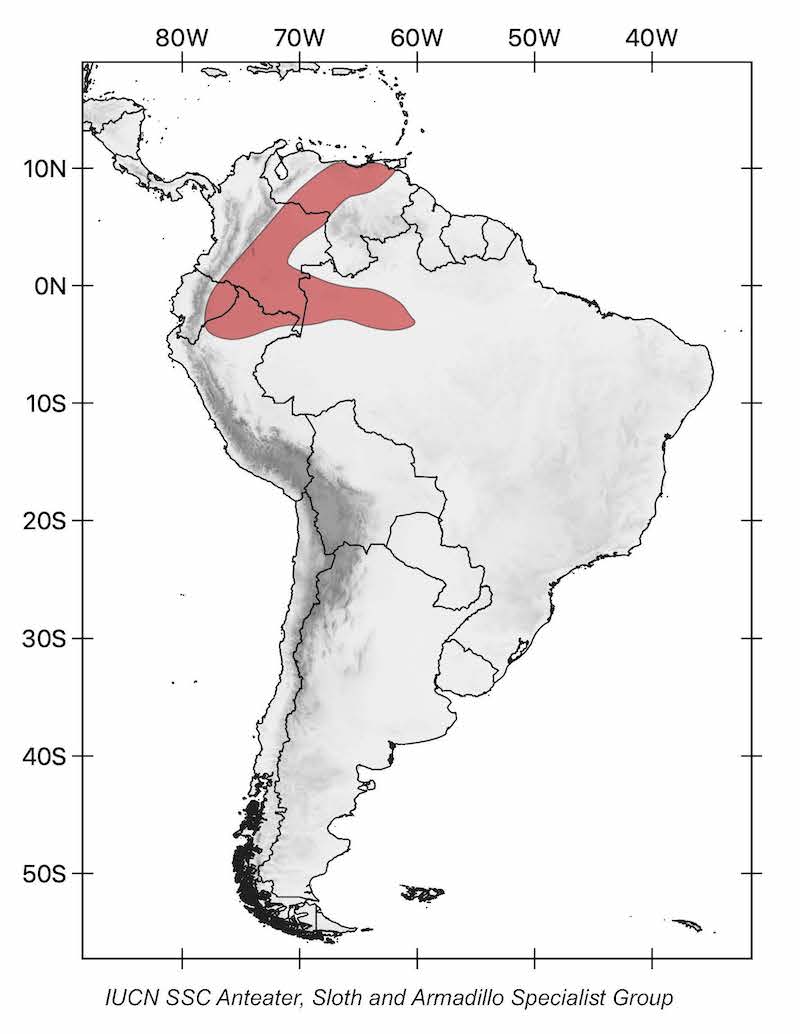Rio Negro silky anteater
(Cyclopes ida)
other common names
Rio Negro pygmy anteater
Taxonomy
Order: Pilosa
Family: Cyclopedidae


description
Until recently, it was thought that there was only a single species of silky anteaters. However, a 10-year long investigation by Miranda et al. (2018) provided evidence that there are actually seven species of Cyclopes.
No specific data are available on the size of Cyclopes ida, but assuming that it is similar in size to other silky anteaters, it would have a head-body length of around 20 cm, a tail of similar length, and it would weigh around 300 grams. Its fur of the dorsum, legs, and tail is grey, and the belly yellow. It usually lacks both dorsal and ventral stripes; when present, the dorsal stripe is indistinct and blended into the dorsal fur.

range
Cyclopes ida can be found in Brazil west and south of the Rio Negro, with its southern limit being the Amazon River, as well as in northern Peru and eastern Ecuador. Additionally, there is a record in the forests of the eastern Andes of Colombia, but its northern limit is unknown.

diet
The diet of this species consists almost entirely of ants.

HaBITAT and ECOLOGy
This species can be found in the Amazon forest. It is common in areas of seasonally inundated blackwater forest (igapó) and small tributary rivers or canals (igarapé). It has arboreal and nocturnal habits.

reproduction
Gestation length is 120–150 days.

threats
The threats to this species are unknown. It is probably affected by habitat loss.

Population trend

conservation status
Cyclopes ida is listed as Data Deficient due to the lack of information on its exact range, population size, and the threats that are affecting it.